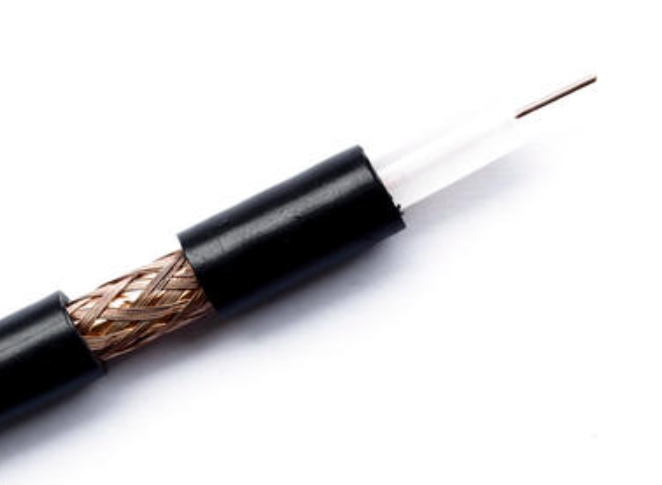
Rg6 Coaxial Cable VS Rg11 Coaxial Cable: What are Differences?
Currently, coaxial cables take a crucial place in transmitting audio, video, and data signals efficiently and reliably. Two commonly used coaxial cable types are RG6 and RG11. While both cables serve similar purposes, there are distinct differences between them that can significantly impact their performance and suitability for specific applications.
This article aims to explore the disparities between RG6 and RG11 coaxial cables, shedding light on their unique characteristics and helping readers make informed decisions when choosing the right cable for their communication needs.
This article aims to explore the disparities between RG6 and RG11 coaxial cables, shedding light on their unique characteristics and helping readers make informed decisions when choosing the right cable for their communication needs.
Introduction to RG6 Coaxial Cable
RG6 coaxial cable is a widely used cable type known for its versatility and broad range of applications. It is defined by its specifications, including a 75-ohm impedance, a solid copper or copper-clad steel conductor, aluminum foil and braided shielding, and an outer diameter of approximately 0.27 inches. RG6 is commonly used in residential settings for cable television (CATV) distribution, satellite TV, broadband internet, and other multimedia applications.
One of the primary advantages of RG6 cable is its signal transmission capabilities. It can efficiently carry high-frequency signals, making it suitable for transmitting digital TV signals, high-definition video, and high-speed internet data.
RG6 cables also provide good signal quality over moderate distances, typically up to 200 feet (60 meters). They are relatively easy to install and terminate, making them popular among do-it-yourself enthusiasts.
However, RG6 cables do have limitations. Due to their smaller conductor and shielding size compared to RG11, they are more susceptible to signal loss and interference, particularly over long cable runs.
This can result in a degraded signal quality, affecting the overall performance of the connected devices. While RG6 cables are cost-effective and widely available, they may not be the optimal choice for applications requiring long cable distances or environments with higher levels of interference.
One of the primary advantages of RG6 cable is its signal transmission capabilities. It can efficiently carry high-frequency signals, making it suitable for transmitting digital TV signals, high-definition video, and high-speed internet data.
RG6 cables also provide good signal quality over moderate distances, typically up to 200 feet (60 meters). They are relatively easy to install and terminate, making them popular among do-it-yourself enthusiasts.
However, RG6 cables do have limitations. Due to their smaller conductor and shielding size compared to RG11, they are more susceptible to signal loss and interference, particularly over long cable runs.
This can result in a degraded signal quality, affecting the overall performance of the connected devices. While RG6 cables are cost-effective and widely available, they may not be the optimal choice for applications requiring long cable distances or environments with higher levels of interference.
Introduction to RG11 Coaxial Cable
RG11 coaxial cable is a heavier and more robust cable option compared to RG6. It features a larger diameter, typically around 0.41 inches, and possesses specifications that include a 75-ohm impedance, a solid copper conductor, aluminum foil, and dual-layer braided shielding. RG11 is commonly used in commercial and industrial settings where longer cable distances and higher signal quality are paramount.
The primary advantage of RG11 cable lies in its signal transmission capabilities over extended distances. Its larger conductor size and shielding provide better signal integrity, minimizing signal loss and enhancing overall performance.
RG11 cables are often used in applications where cable runs can exceed 200 feet (60 meters), such as long-distance CATV distribution, broadband internet, and other professional audio/video installations.
RG11 cables, however, have certain considerations to bear in mind. Their larger diameter and increased stiffness can make them more challenging to install, especially in tight spaces or areas with existing cable infrastructure.
RG11 cables are typically more expensive than RG6 cables, primarily due to their construction and larger amount of materials required. It's important to assess the specific needs of the application and balance them against the associated costs.
The primary advantage of RG11 cable lies in its signal transmission capabilities over extended distances. Its larger conductor size and shielding provide better signal integrity, minimizing signal loss and enhancing overall performance.
RG11 cables are often used in applications where cable runs can exceed 200 feet (60 meters), such as long-distance CATV distribution, broadband internet, and other professional audio/video installations.
RG11 cables, however, have certain considerations to bear in mind. Their larger diameter and increased stiffness can make them more challenging to install, especially in tight spaces or areas with existing cable infrastructure.
RG11 cables are typically more expensive than RG6 cables, primarily due to their construction and larger amount of materials required. It's important to assess the specific needs of the application and balance them against the associated costs.
Comparison of RG6 and RG11 Coaxial Cables
When comparing RG6 and RG11 coaxial cables, several key factors come into play:
●Transmission Characteristics and Signal Performance
RG11 provides better signal integrity and lower signal loss over longer distances compared to RG6.
RG6 may experience signal degradation and increased susceptibility to interference over extended cable runs.
RG6 may experience signal degradation and increased susceptibility to interference over extended cable runs.
●Bandwidth and Frequency Capabilities
Both cables support a wide range of frequencies, but RG11 typically offers higher bandwidth and can handle higher-frequency signals more efficiently than RG6.
●Signal Loss and Distance Limitations
RG11 has lower signal loss compared to RG6, allowing for longer cable runs without significant degradation in signal quality.
RG6 is suitable for shorter cable distances up to approximately 200 feet (60 meters) without significant signal loss.
Physical Attributes and Installation Considerations
RG11 has a larger diameter and increased stiffness, making it more challenging to install, especially in tight spaces or existing cable infrastructure.
RG6 is more flexible and easier to handle, making it a popular choice for residential installations and DIY projects.
RG6 is suitable for shorter cable distances up to approximately 200 feet (60 meters) without significant signal loss.
Physical Attributes and Installation Considerations
RG11 has a larger diameter and increased stiffness, making it more challenging to install, especially in tight spaces or existing cable infrastructure.
RG6 is more flexible and easier to handle, making it a popular choice for residential installations and DIY projects.
●Cost and Availability
RG6 cables are generally more cost-effective and widely available compared to RG11 cables, making them a popular choice for residential and small-scale applications.
RG11 cables are typically more expensive due to their construction and a larger amount of materials required, but they offer enhanced performance and are commonly used in commercial and industrial settings.
RG11 cables are typically more expensive due to their construction and a larger amount of materials required, but they offer enhanced performance and are commonly used in commercial and industrial settings.
Conclusion
RG6 and RG11 coaxial cables have distinct differences that make them suitable for different applications within the realm of communication technology. RG6 offers versatility, affordability, and ease of installation, making it a popular choice for residential use. RG11, on the other hand, excels in commercial and industrial environments that require long cable distances and superior signal integrity.







Leave a comment